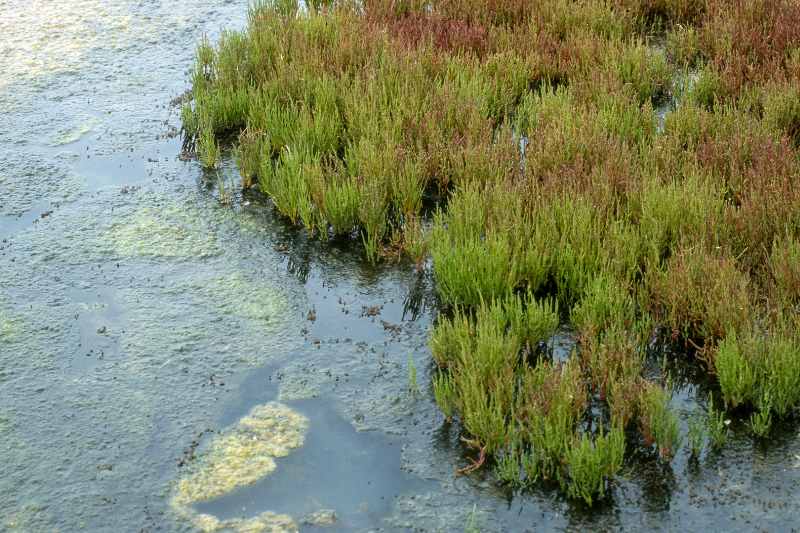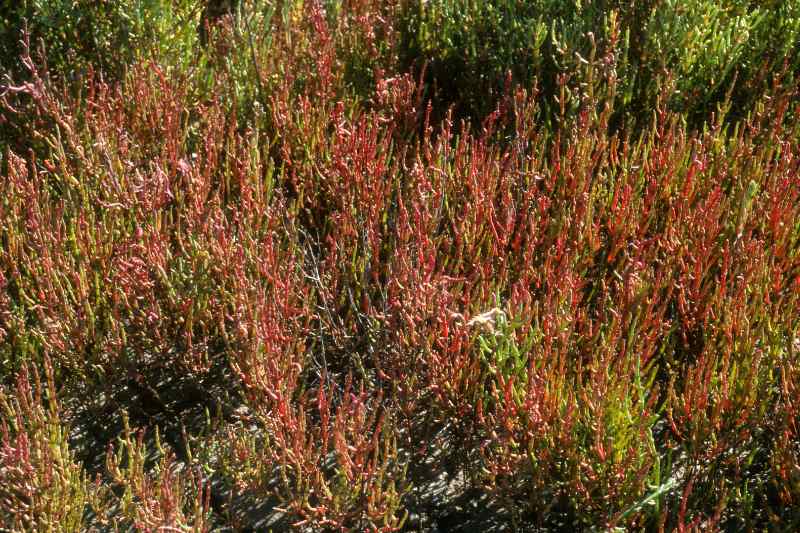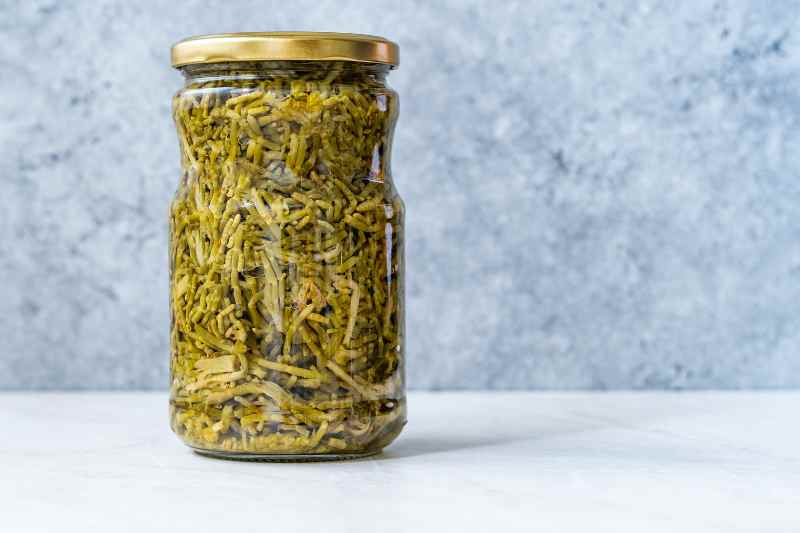European glasswort in a nutshell
Samphire, also called sea asparagus or sea pickle, is a fascinating plant that grows in saline marshes along coasts. Recognisable by its crunchy green habit, this plant is prized not only for its distinctive flavour, which evokes oceanic brininess, but also for its many nutritional virtues, being rich in minerals and vitamins. Let’s discover how to harvest and then preserve samphire in garden or wild settings.
Samphire is a succulent plant that stands out for its ability to thrive in saline media where few other plants survive. From a botany perspective, it bears green, fleshy, segmented stems that can resemble miniature asparagus spears. These stems lack conventional leaves, an adaptation that reduces water loss and enables the plant to withstand salty conditions in its natural habitat. Flowering is discreet, with small flowers that sit almost imperceptibly along the stem.
Several varieties of samphire exist, mainly distinguished by place of growth and physical characteristics. Among them, European glasswort (Salicornia europaea) is one of the most widespreads, valued for tenderness and flavour. Other varieties, such as American samphire (Salicornia bigelovii), are grown for specific uses, notably in food industry. There is also a Japanese samphire (Salsola komarovii).
When to harvest samphire?
Best period for picking samphire runs from spring through summer. During these months, plant reaches peak tenderness and flavour, especially just before flowering, when it is richest in nutrients.

Be careful when foraging in the wild!
Foraging samphire must be done with awareness and respect for its natural habitat. Here are some ethical and ecological principles to follow:
- Check local legislation : Some protected areas prohibit picking wild plants. Find out regulations in area where you plan to harvest samphire to ensure activity is permitted. Consult prefecture or local council website for dates and maximum permitted quantities.
- Harvest in moderation : Take only small amount of samphire for personal use to avoid depleting natural resources. Leave enough plants intact to ensure reproduction and growth.
- Avoid disturbing habitat : Watch where you step and avoid trampling surrounding plants or disturbing local wildlife.
- Prefer cutting to uprooting : Use scissors, a pruning shear or a knife to cut samphire stem near its base, without pulling out roots. This allows plant to regrow after harvest.

How to harvest samphire?
Responsible harvesting of samphire is essential to protect both plant and delicate coastal ecosystem. Using scissors or a knife, cut samphire stem leaving about one third of its length to encourage regrowth and preserve ecosystem continuity. It is crucial not to uproot plant so roots and natural balance remain intact. For personal consumption, a few handfuls per person are sufficient, limiting environmental impact and ensuring future availability of samphire. This respectful method helps make harvest sustainable and allows future generations to enjoy this resource.
For those who cultivate samphire in vegetable garden or in pot, harvesting principles are similar. Be sure to cut stems carefully to encourage the plant's continuous growth. Home cultivation can be sustainable alternative to wild foraging, enabling enjoyment of maritime flavours without disturbing natural habitats.

Cleaning and preparing harvested samphire
Cleaning tips
- Rinse in cold water : Start by rinsing samphire thoroughly under cold water to remove sand, marine debris and surface salt. This is particularly important for wild-harvested samphire, which may be more exposed to these elements.
- Soak if necessary : If samphire is especially sandy or salty, a short soak in a bowl of cold water can help remove grit and excess salt. Change water until it runs clear.
- Drain and dry : After rinsing (and soaking if needed), drain samphire thoroughly and pat dry with a clean tea towel or kitchen paper. This helps prevent spoilage during storage.
Tips to preserve nutritional and flavour qualities
- Light cooking : Samphire needs minimal cooking to preserve crunchy texture and nutrients. A brief boiling or blanching for a few minutes is enough. It can also be eaten raw in salads for a stronger flavour.
- Quick storage : To preserve samphire, either choose a method that maintains its qualities, such as freezing after blanching, or consume it fresh within days of harvest. Freezing preserves texture and nutrients better than long-term refrigeration.
- Creative culinary uses : Samphire pairs well with many dishes, from salads to fish recipes and side dishes. Its unique flavour can lift a simple recipe, adding saline notes and a crunchy texture.

Methods to preserve samphire
Refrigeration
For short-term use, samphire can be kept in fridge. After careful cleaning and drying, place samphire in perforated plastic bag or airtight container. It will keep fresh for about a week. This method suits those who plan to eat samphire within days of harvest.

Blanching and freezing
Blanching followed by freezing is an excellent way to extend samphire shelf life while preserving organoleptic qualities. Blanch stems for 1–2 minutes in boiling water, then plunge immediately into iced water to stop cooking. After drying, place in freezer bags removing as much air as possible. Frozen, samphire can keep up to one year, allowing enjoyment out of season, although texture will be slightly less firm.
Brining technique
Preserving in brine is ideal for samphire, not only because it extends shelf life but also because it enhances natural saline flavour. Here’s how:
- Prepare brine : Dissolve salt (about 100 grams) in one litre of hot water to make a brine. Let mixture cool to room temperature.
- Clean samphire : Rinse harvested samphire thoroughly under cold water to remove sand and impurities.
- Jar filling : Place clean samphire into sterilised jars, then pour cooled brine over until stems are completely submerged.
- Seal and store : Seal jars tightly and keep in cool, dark place. Samphire in brine can keep for several months and flavour improves with time.

Drying
Drying is a traditional method that preserves samphire while giving it a different texture, suitable for varied culinary uses.
- Preparation : Clean samphire as described above and ensure it is thoroughly dry by patting with kitchen paper or letting it drain.
- Drying : Spread samphire on trays and dry in airy, warm, dry place away from direct sunlight. Alternatively, use food dehydrator following manufacturer instructions for green vegetables.
- Storage : Once samphire is completely dried, it should be crisp. Store in airtight containers away from light and humidity. Dried samphire can be kept for several years.
Necessary equipment
- Basket or canvas bag
- Garden scissors or knife
- Glass jars with lids for brine preservation
- Airtight containers for storing dried samphire
- Food dehydrator (facultative)
































Comments